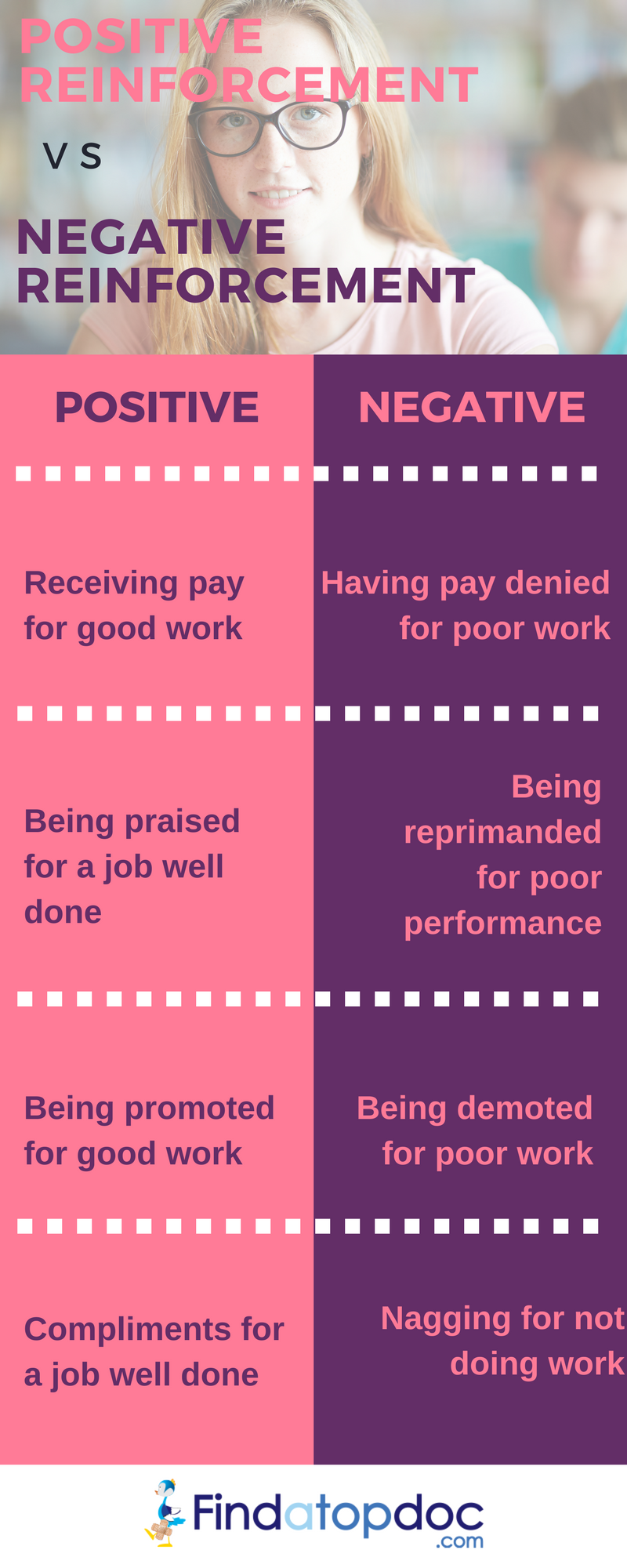
Positive reinforcement involves the addition of a reinforcing stimulus following a behavior that makes it more likely that the behavior will occur again in the future. When a favorable outcome, event, or reward occurs after an action, that particular response or behavior will be strengthened. One of the easiest ways to remember positive reinforcement is to think of it as something being added afterwards. By thinking of it in these terms, you may find it easier to identify real-world examples of positive reinforcement. Sometimes positive reinforcement occurs quite naturally. For instance, when you hold the door open for someone you might receive praise. That affirmation serves as positive reinforcement and may make it more likely that you will hold the door open for people again in the future. In other cases, someone might choose to use positive reinforcement very deliberately in order to train and maintain a specific behavior. An animal trainer, for example, might reward a dog with a treat every time the animal shakes the trainer's hand.
What’s the “Positive” in Positive Reinforcement?
The term “positive” is used in conjunction with reinforcement to denote a specific form of reinforcement. It does not mean something “good” but instead the term positive relates more to the mathematical term of “adding”. This is because positive reinforcement is the addition of something as a result of a behavior. Before you engaged in the behavior, what you wanted was not present but after you engaged in the behavior what you wanted is present.
Different Types of Positive Reinforces
There are many different types of reinforces that can be used to increase behaviors, but it is important to note that the type of reinforce used depends on upon the individual and the situation. While gold stars and tokens might be very effective reinforcement for a second-grader, they are not going to have the same effect on a high school or college student.
Natural reinforcers are those that occur directly as a result of the behavior. For example, a girl studies hard, she pays attention in class, and she does her homework. As a result, she gets excellent grades.
Token reinforcers are points or tokens that are awarded for performing certain actions. These tokens can then be exchanged for something of value.
Social reinforcers involve expressing approval of a behavior, such as a teacher, parent, or employer saying or writing "Good job" or "Excellent work."
Tangible reinforcers involve presenting actual, physical rewards such as candy, treats, toys, money, and other desired objects. While these types of rewards can be powerfully motivating, they should be used sparingly and with caution.
When Is Positive Reinforcement Most Effective?
When used correctly, positive reinforcement can be very effective. According to a behavioral guidelines checklist published by Utah State University, positive reinforcement is most effective when it occurs immediately after the behavior. The guidelines also recommend the reinforcement should be presented enthusiastically and should occur frequently. The shorter the amount of time between a behavior and presenting positive reinforcement, the stronger the connection will be. If a long period elapses between the behavior and the reinforcement, the weaker the connection will be. These schedules of reinforcement can have a powerful influence on how strongly a response is and how often it occurs.
At the end of the day positive reinforcement or feedback can have greater effects then negative feedback, but this is all dependent upon the person and their response to receiving whether positive or negative reinforcement to the specific behavior they showed.


